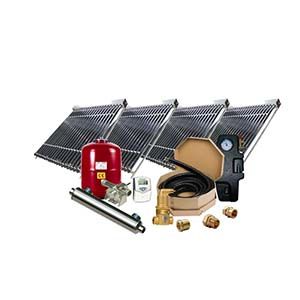
Solar panels are considered as the popular renewable technology around the world. Thanks to the government incentives and tax benefits, the demand for solar PV kits has been booming over the last decade.
How do solar panels work?
Solar PV panels transform the free energy from the sun into electricity. Then, it is converted from a DC current to an AC current through an inverter, making it easy to use in the household. The solar panels absorb the solar energy and convert it into the DC electricity through photovoltaic cells. They are made from different layers of semi-conductor material usually silicon. When the sunlight falls on the cells, an electric field is generated around them.
The stronger the sunshine, the more electricity is produced by solar PV kits. However, DC current is not used in the residential setting; so the panels get hooked up to a small and highly-efficient inverter. Solar inverter is the heart of the solar system. Generally, it’s installed inside your home as the micro-versions are available that fit onto the back of individual panels.
What size of solar panels do you need?
The rating of solar panels is done as per their performance in optimum conditions i.e. direct sunlight during summer or to get technical under complete solar radiation. This is expressed as kilowatts peak kWp.
Usually a residential setup has the ratings somewhere between 3.5kWp and 4kWp. The exact specification depends on different factors like size of the house, occupant’s number and the present or future electricity requirements.
Depending on the type of system you use, you can expect to need around 8m2 roof spaces per each kWp. The rule of thumb states that 1kWp solar panels installed on a south facing roof at a good pitch will offer around 800-1000kWh electricity every year. However, it will vary depending on your home’s location.
Is solar panel right choice for your home?
Some homeowners put off solar PV kits simply because they don’t have a south-facing roof. But a perfectly specified setup can fulfill a significant proportion of electricity requirements of your household significantly even in an eastern or western configuration.
In addition to, a 30 to 40 degree roof pitch is perfect; but panels can still soak up enough light even at other angles. So, you shouldn’t make any assumption that you are living in an area that’s often overcast and you won’t receive sufficient sunlight for the solar panels to function properly.
Moreover, the bright and direct sunlight is certainly a great advantage; but PV cells can generate enormous amount of electricity from diffused daylight. They will continue operating even during cloudy days.
You should do watch out for the potential sources of shading that may impact on the overall performance of solar panels. The common sources include nearby trees, chimney stacks, overlooking buildings, etc.
It’s quite surprising that how often the new home design fails to account for this though it’s much difficult to avoid with existing buildings.
Bottom Line –
Latitude51 Solar provides highly efficient solar PV kits that allow you to write off your investment and generate optimal ROI in the long run. Our solar PV kits come with everything you will need to get the system up and running. For more information about our products and their specifications, please visit our website at https://www.latitude51solar.ca/solar-pv-kits-on-grid.

